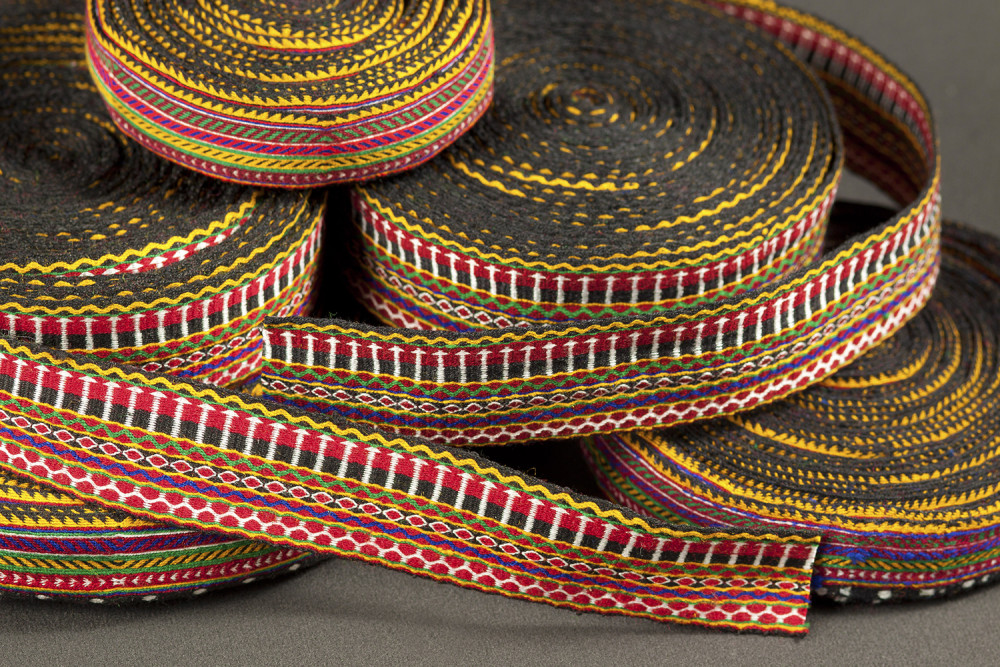
Modakheleh Bafi of Lorestan
Modakheleh is a handicraft of Lorestan which itself is a kind of Kart Bafi (weaving cards), the art of making lace strips that are used to ornate edges of clothes. Kart Bafi has many different names in each region. For example, in Qazvin it is called “Pan Bafi”, while in Lorestan and Khorasan, they call it “Modakheleh afi”. People of Chaharmahal and Bakhtiari province call it “Veris Bafi” and people of Ali Abad, “Navar Bafi”. Kart Bafi can be traced back to many years ago and it was practiced in ancient cultures. Early artifacts of Kart Bafi have been found in north of Africa, Medieval Europe, Asia and Iceland.
Researchers remark that in Iran ornate lace strips were prominent in Safavid dynasty and later. However, some older artifacts of Lorestan consist of painted bronze dishes. In one of them a man is depicted who is shooting arrows. His clothes have been fringed by laces. Also we can see ornate laces on clothes and dresses of Medes people designed by patterns in form of letter V. Nowadays, the art of Kart Bafi is practiced by nomadic people of Lor, Bakhtiar and Shahsavan. The lace strips of Shahsavan tribe are created by using fine and masterfully colored wool, and hence they are more beautiful.
Modakheleh is a very delicate and narrow lace that decorates pieces of clothes. They are weaved using cotton or wool and occasionally silk yarn. Pieces of lace are used to ornate collars, edge of sleeves or dresses of women. In the past, they were used for clothing of newborns and formal garments of men, too. In addition to clothing, they are now used as bookmarks, glass straps or camera straps. To weave, instead of textile machinery, Kart or cards are used that have holes on them, hence the name is Kart Bafi. An interesting point about these Karts is that in Lorestan, in the past, they were made of gazelle skin, and in other regions, of ivory, leather, pottery or fibers. Today, they are made of thin layers of wood, plexiglass and thick paper. In fact, the Kart acts as the heddle and this method is a small and mobile textile machinery that can produce a narrow fabric (1-3 centimeters in width). The size of the Kart varies from 6 to 9 centimeters.